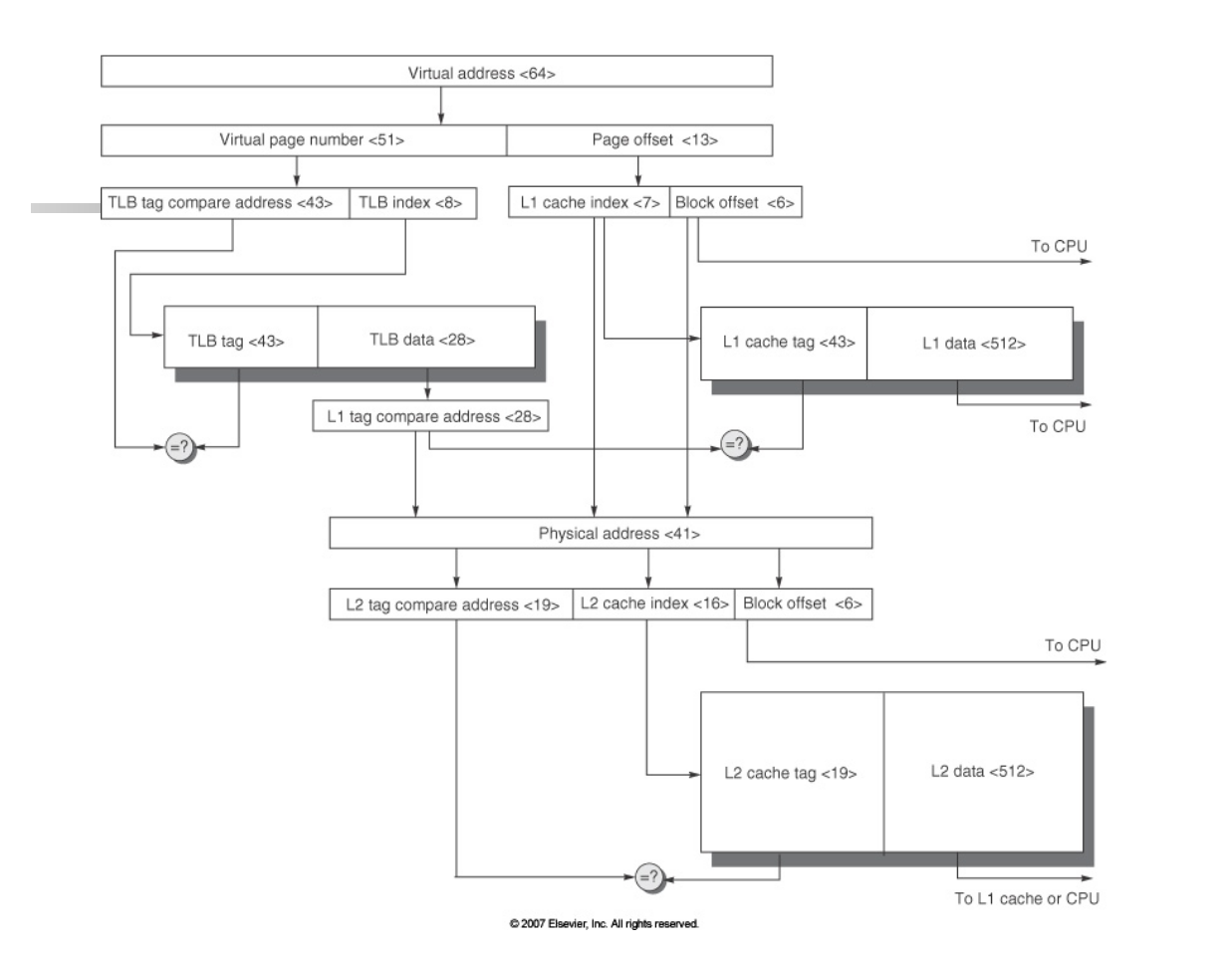I’m really struggling to intimately understanding virtually index privately tagged concept. From a high level, I get that VIPT is an optimization technique, parallelizing both the translation of virtual addresses to physical and the cache look up of the physical address. This seems impossible at first since the cache depends on the physical frame number (PFN).
So in order to accomplish this, we’ll use the some bits of the VPN to search in the TLB and then the least significant bits when searching the cache. This makes sense. But what I don’t quite fully don’t understand is why we have to limit the size of the cache in order to avoid aliasing (i.e. different virtual addresses that end up mapping to the same physical frame).
Thinking out loud here … I suppose that if the index of the physical bits bleed into the virtual address, then we actually do not avoid the aliasing problem, the issue of having more than one virtual address map to the same physical frame.
Ok, I think I got it.
But what’s the catch?
You only can have a very small cache, the size equal to the page size multiplied by the set associativity. This means that the only way to increase the size of the cache is by increasing the associativity which ultimately increases the look up time as well since the cache has to look the tag up across multiple cache lines.
Reference
- https://cs.stackexchange.com/questions/68492/does-the-aliasing-problem-show-up-in-a-virtually-indexed-physically-tagged-cache
- https://cseweb.ucsd.edu/classes/fa10/cse240a/pdf/08/CSE240A-MBT-L18-VirtualMemory.ppt.pdf

